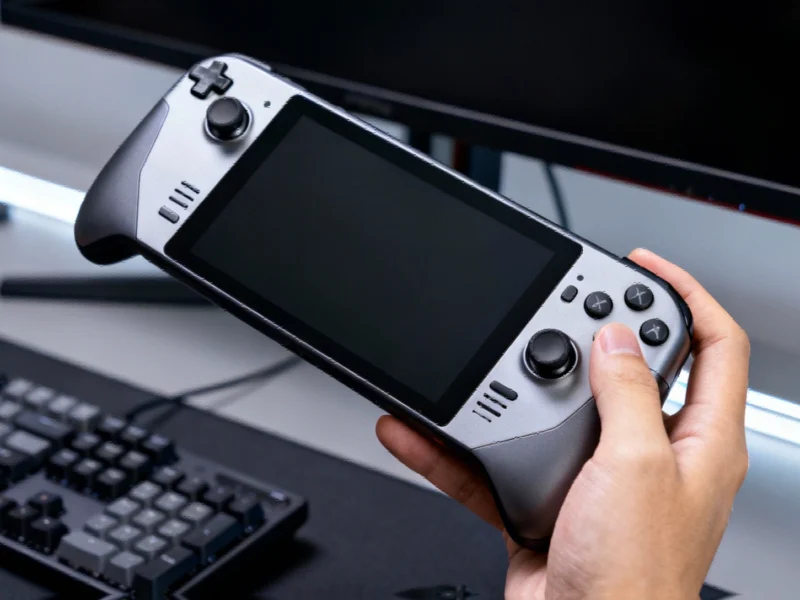Engineering Marvel: Gaming Performance in 2.5-Liter Form Factor
Zotac has achieved what many considered impossible in the gaming PC market – creating a fully-capable gaming system with discrete graphics in an incredibly compact 2.5-liter chassis. The newly launched Magnus EN275060TC represents a significant breakthrough in small form factor (SFF) computing, combining high-performance components with unprecedented space efficiency.
Table of Contents
Power-Packed Specifications
At the heart of this miniature powerhouse lies Intel’s Core Ultra 7 255HX processor, paired with NVIDIA’s RTX 5060 Ti graphics card. This combination delivers serious gaming performance that challenges conventional wisdom about what’s possible in ultra-compact systems. The engineering achievement becomes even more impressive when considering the thermal management required to keep these components running optimally within such confined spaces., according to recent innovations
The system supports up to 96GB of DDR5 memory running at 6400MHz using CSO-DIMM modules, a specialized form factor essential for maintaining the device’s compact dimensions. Storage options include dual M.2 slots supporting PCIe 4.0 SSDs, providing adequate capacity for most gaming and productivity needs despite the physical constraints., according to recent research
Connectivity and Expansion
Zotac hasn’t compromised on connectivity despite the minimal footprint. The Magnus EN275060TC features:, according to recent research
- Four display outputs supporting multiple monitor setups
- Thunderbolt 4 support for high-speed external storage and peripherals
- Dual 2.5 Gigabit Ethernet ports for network-intensive applications
- Wi-Fi 7 and Bluetooth 5.4 for wireless connectivity
- External GPU support capability for future graphics upgrades
Market Position and Target Audience
This system addresses a growing niche of gamers and professionals who require high performance without sacrificing portability. While the $1,700 price point positions it as a premium product, the value proposition lies in its unique combination of power and compactness. The target market includes:
- Frequent travelers who need gaming capabilities on the go
- Space-constrained urban dwellers
- LAN party enthusiasts
- Professional users needing discrete graphics in minimal workspace
Technical Challenges and Innovations
Developing such a compact system with discrete graphics presented significant engineering hurdles. Thermal management represents the primary challenge, as high-performance components generate substantial heat within a confined volume. Zotac’s solution likely involves custom cooling solutions and precisely engineered airflow patterns that maximize heat dissipation while maintaining acceptable noise levels., according to related news
The use of specialized components like CSO-DIMM memory modules demonstrates the level of customization required to achieve this form factor. These engineering choices, while necessary for the compact design, may impact upgradeability and serviceability compared to traditional desktop systems., according to recent studies
Industry Implications
Zotac’s achievement signals a broader trend in the computing industry toward increasing performance density. As components become more power-efficient and thermal solutions more sophisticated, we can expect to see continued innovation in compact gaming systems. This development challenges traditional desktop paradigms and could influence future designs across multiple computing segments., as our earlier report
The Magnus EN275060TC represents a significant milestone in the evolution of gaming PCs, proving that substantial gaming performance no longer requires massive tower cases. As the technology matures and becomes more affordable, we may see increased adoption of ultra-compact systems in both gaming and professional markets.
Availability and Future Prospects
The system is expected to reach broader availability in the coming weeks, with Zotac likely monitoring initial market response closely. Success in this segment could prompt other manufacturers to develop competing products, potentially driving innovation and price competition in the ultra-compact gaming PC market.
For consumers, this represents an exciting development in the ongoing evolution of gaming hardware, offering new possibilities for how and where high-performance computing can be deployed.
Related Articles You May Find Interesting
- Taming the Invisible Threat: Advanced EMI Mitigation in Modern Wireless Power Sy
- Global Tech Gender Gap Study Reveals Disconnect Between Perception and Reality
- Jet Engine Repurposing Emerges as Strategic Power Solution for Data Centers Faci
- Battery Storage Breakthrough: How Aligned and Calibrant Are Reinventing Data Cen
- Enterprises Face Data Hurdles Despite Surging Investment in Agentic AI, Study Fi
This article aggregates information from publicly available sources. All trademarks and copyrights belong to their respective owners.
Note: Featured image is for illustrative purposes only and does not represent any specific product, service, or entity mentioned in this article.



